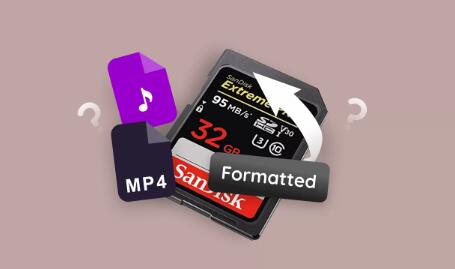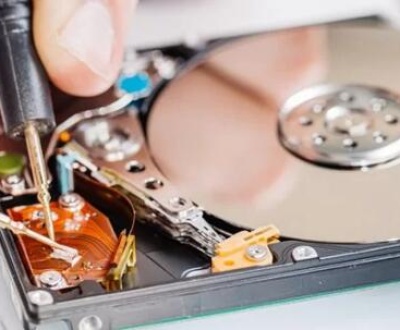SD cards are ubiquitous in our digital lives, serving as the primary storage medium for cameras, smartphones, tablets, and other devices. Unfortunately, formatting an SD card whether accidentally or intentionally can lead to the loss of crucial files. However, the good news is that recovery is often possible.
Before you begin the recovery process, it’s essential to understand what happens when you format an SD card. Formatting clears the file system and may make previously stored data inaccessible. However, the actual data often remains intact until new data overwrites it.
Quick Format: Deletes the file allocation table, making the data invisible but not permanently erased. This type of formatting is often the least destructive.
Full Format: Scans for bad sectors while deleting data. This process takes longer and may lead to more data loss.
Understanding these concepts is crucial as they affect your chances of data recovery.

Step-by-Step Guide to Recover Data from a Formatted SD Card
Step 1: Stop Using the SD Card
The first and most crucial step is to stop using the SD card immediately. Every time you write new data to the card, you increase the chances of overwriting the files you want to recover. Remove the card from your device and avoid taking any photos, adding new files, or formatting it again.
Step 2: Choose the Right Data Recovery Software
Panda Assistant is an innovative data recovery software designed to help users recover lost, deleted, or corrupted data from various storage devices, including external hard drives, USB drives, and SD cards. With its user-friendly interface and powerful recovery algorithms, Panda Assistant simplifies the data recovery process for both novices and tech-savvy individuals.
One of the standout features of Panda Assistant is its ability to perform deep scans, ensuring that even the most stubbornly hidden files can be recovered. Whether you’ve accidentally deleted important documents, experienced a system crash, or encountered data corruption, Panda Assistant is equipped to handle these challenges. The software supports a wide range of file types, making it versatile for various recovery needs.
In addition to its robust recovery capabilities, Panda Assistant prioritizes user security and data integrity. It operates in a read-only mode, meaning your original data remains untouched during the recovery process. This feature not only ensures a higher success rate but also provides peace of mind to users.
With continuous updates and dedicated customer support, Panda Assistant stands out in the crowded data recovery market. Whether you’re a home user or a professional, Panda Assistant is your reliable partner in safeguarding and recovering your valuable data. Experience the difference today and reclaim your files with ease!
Step 3: Install the Recovery Software
Download: Visit the official website of your chosen software to download the latest version. Ensure you download from a reputable source to avoid malware.
Install: Follow the installation prompts carefully. Do not install the software on the SD card itself to prevent data overwriting.
Step 4: Connect the SD Card to Your Computer
Use a Card Reader: Insert your formatted SD card into a card reader connected to your computer. If your device has a built-in card slot, you can use that as well.
Verify Connection: Open “This PC” (or “My Computer”) to ensure your computer recognizes the SD card.
Step 5: Launch the Recovery Software
Open the Software: Start the recovery program you installed.
Select the SD Card: Choose your SD card from the list of available drives within the software interface.
Step 6: Start the Scanning Process
Choose Scan Type: Most recovery tools offer both a quick scan and a deep scan. Start with a quick scan, which is faster, and if it doesn’t yield results, proceed to the deep scan.
Initiate the Scan: Click the “Scan” button to allow the software to analyze the SD card for recoverable files.
Step 7: Review the Results
Check the List of Recoverable Files: After the scan, the software will present a list of files that can potentially be recovered.
Preview Files: If the software allows, preview the files to determine which ones you want to recover. This feature can help you decide which files are worth retrieving.
Step 8: Recover Your Files
Select Files: Choose the files you wish to recover by checking the boxes next to them.
Choose Recovery Location: Save the recovered files to a different storage device or location to prevent overwriting any remaining data on the SD card.
Click “Recover”: Initiate the recovery process by clicking the “Recover” button. The software will start retrieving your selected files.
Step 9: Verify the Recovered Data
After the recovery process completes, navigate to the location where you saved the recovered files. Open a few of them to ensure they are intact and usable. If some files are corrupted, it may indicate that they were partially overwritten.
Additional Tips for Successful Data Recovery
Regular Backups: Regularly back up your important files. Consider using cloud services or external drives to minimize data loss risks.
Avoid Further Formatting: If your SD card becomes corrupted or unreadable, avoid formatting it again, as this can lead to permanent data loss.
Handle SD Cards Carefully: Protect your SD cards from physical damage and extreme temperatures. This helps maintain their reliability and lifespan.
Use Read-Only Mode: If available, use read-only mode when troubleshooting or recovering data to prevent accidental writes.
Consult Professionals: If software recovery efforts fail, consider seeking help from professional data recovery services. They have advanced tools and expertise for complex data recovery scenarios.
Remember to act quickly after formatting, choose the right recovery software, and always verify the integrity of your recovered files. Implementing regular backups and handling your SD cards with care will significantly reduce the risk of data loss in the future. With the right knowledge and tools, you can restore your valuable files and continue enjoying the digital content stored on your SD card.
About us and this blog
Panda Assistant is built on the latest data recovery algorithms, ensuring that no file is too damaged, too lost, or too corrupted to be recovered.
Request a free quote
We believe that data recovery shouldn’t be a daunting task. That’s why we’ve designed Panda Assistant to be as easy to use as it is powerful. With a few clicks, you can initiate a scan, preview recoverable files, and restore your data all within a matter of minutes.
Subscribe to our newsletter!
More from our blog
See all postsRecent Posts
- Data recovery salt lake city utah 2025-04-18
- Data recovery sacramento 2025-04-18
- Data recovery miami 2025-04-18

 Try lt Free
Try lt Free Recovery success rate of up to
Recovery success rate of up to









